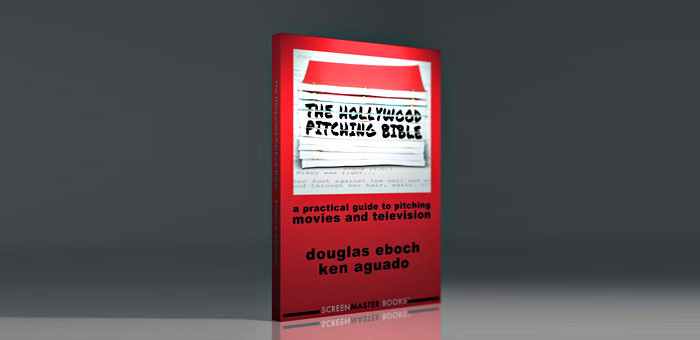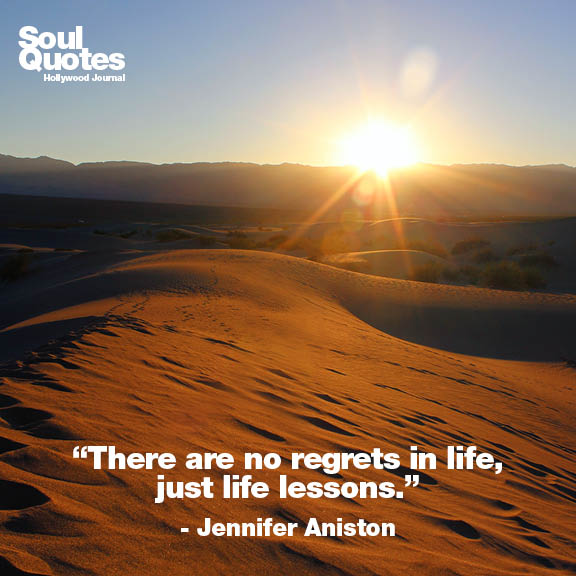‘The Hollywood Pitching Bible': How a meeting works
by Douglas Eboch & Ken Aguado
The producer sits behind her elegant, deco-style desk skimming through a spec script when the intercom buzzes. “Your 10:30’s here,” her assistant says.
The producer looks at her watch. 10:52. Frowns. “Okay, get me a time-machine,” the producer mumbles. “What was that?” the assistant replies. “Never mind, show him in,” the producer says with a sigh. “And let me know if Gert calls from Tesla.”
The writer enters, hitching up his sweat pants. “Nice to meet you. Sorry I’m late. The parking lot’s a mile away,” he says.
The producer comes around from behind the desk to greet him. She recoils a little at the pungent scent wafting from the writer. “No problem,” she lies. “It gave me time to look at your script.”
“Oh. You haven’t read my script,” the writer says, reconsidering if he should take a seat.
“I just started it but the coverage was very flattering. However, I have an eleven o’clock, so…” The producer indicates the writer should take a seat.
“Oh, okay, I guess that’s good,” the writer says as he sits – and almost disappears into the deep, cushy sofa.
The producer takes a seat on the chair opposite and motions for him to hurry and start. “So…”
The writer tries to summon his A-game and dives in. “Right. My film opens on a vast sea…”
The intercom buzzes again. “Gert is on three,” says the assistant.
The producer holds up a halting finger to the writer. “Sorry, I should take this.”
What’s wrong with the above scenario? Really, everything.
Last time we discussed establishing main characters in a pitch. This week we will cover how a meeting works.
For people who are new to Hollywood, the ritual of “The Hollywood Meeting” sometimes seems like the stuff of urban legends. For the pros, our little scenario above will seem a bit exaggerated, but not by much. While a pitch meeting in Hollywood shares aspects with other social interactions, it also has rules and rituals that are unique – some of which we cover in our book.
The bottom line is this: Hollywood is a place that can kill you with kindness one moment and siphon off some of your soul in the next. And amazingly, these two moments can happen at the exact same time. Whatever your ambitions in the entertainment business, we encourage you to live by the words of hip hop artist DMX (aka Earl Simmons), who said “Do dirt, get dirt. So I treat people with the same respect that I want.” Words to live by.
Hollywood Journal has graciously offered to publish a few excerpts from The Hollywood Pitching Bible. In this third excerpt, we describe how a meeting works and proper meeting etiquette so that you are prepared to do your best in a stressful situation.
Read the first excerpt and the second excerpt here.
“How A Meeting Works”
It’s useful to have some idea of what’s going to happen when you go into a meeting. If nothing else, it might help you to relax a little. And, truth be told, even experienced screenwriters tend to spend an inordinate amount of time discussing this kind of thing.
General meetings.
One of the most common types of meeting you’ll do is what is known as a “general meeting.” You get a general meeting when someone has read some of your work and wants to meet you. The majority of the time you will be meeting with one person, but there could be two, three or even more. There might be more than one producer or development exec at the company who wants to meet you and/or there might be an intern or assistant to take notes. Most general meetings will be with producers or the people who work for producers, sometimes called creative executives or development executives. Needless to say, you should know the job title of everyone you will be meeting in advance. If someone is a senior vice-president and you call him or her a “development executive” they might be insulted. Most people work hard for their titles. Know whom you are talking to.
Etiquette.
Get there on time – and be prepared to wait. Yes, people in Hollywood are busy but sometimes there’s a bit of a power play that happens. They get to keep you waiting to prove they’re more powerful than you. The wait is actually good. It gives you a chance to settle in and get your bearings. And, if you’ve just had to walk halfway across the studio lot on a hot September day, it gives you a chance to cool down.
Bring a notebook and something to write with. You are a professional going into a business meeting – be prepared. If the buyer gives you feedback on your pitch, write it down. This serves two purposes. First of all, you’ll remember everything more clearly. Second, it will allow you to digest what has been said before responding. It’s not uncommon for writers to have knee-jerk negative reactions to suggestions. If you give yourself time to consider the comments, you may discover merit that wasn’t immediately obvious. And even if the suggestion is off base, you don’t want to get in a heated argument with the buyer.
Before you go in the assistant or receptionist will ask if you’d like anything to drink. We recommend water, even if you’re not thirsty. You may get dry mouth during the meeting, plus it gives you a prop. If you need a few seconds to think over how to answer a question, you can take a drink to buy some time. Don’t ask for soda – it will make you burp. And avoid coffee or tea. They may not cool down enough to drink before the end of the meeting. And if you’re nervous, caffeine might exacerbate the problem.
We know this stuff seems silly. But sometimes little things like this can make the difference between a good meeting and a bad one. Or at least they can affect your comfort level.
Excerpt from: The Hollywood Pitching Bible: A Practical Guide to Pitching Movies and Television by Douglas Eboch & Ken Aguado Copyright 2013 – All Rights Reserved
About Douglas Eboch & Ken Aguado
Douglas Eboch is a screenwriter living in Los Angeles. His credits include the original script “Sweet Home Alabama.” Follow Douglas on Twitter @dougeboch and his Let's Schmooze blog. Ken Aguado is a producer living in Los Angeles. His most recent film is “Standing Up,” written and directed by DJ Caruso. They co-wrote “The Hollywood Pitching Bible: A Practical Guide to Pitching Movies and Television," which is available at Amazon, iTunes and selected bookstores around the country.













